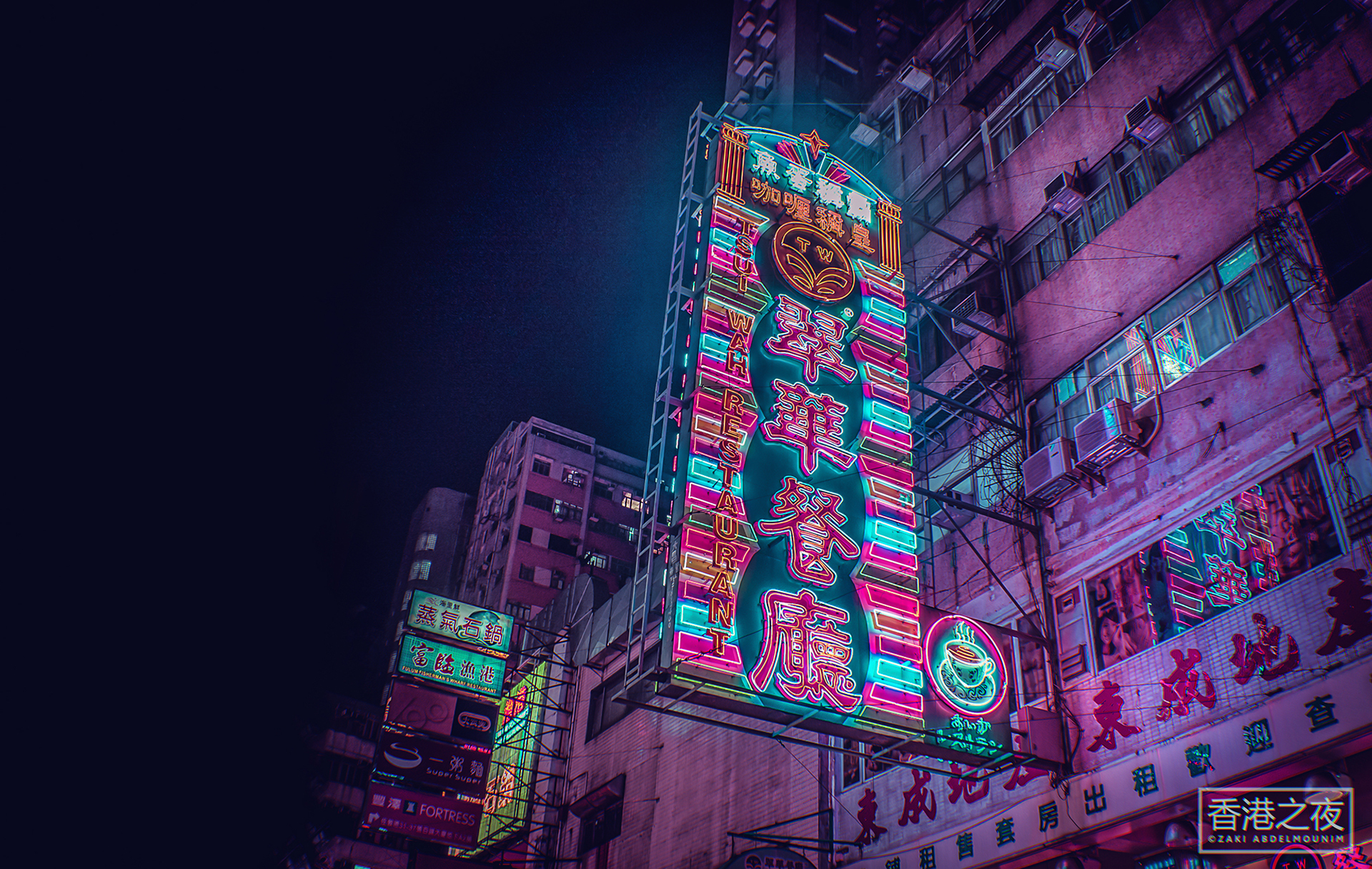Last Updated on 11/17/2018 by Mark Beckenbach
With Hong Kong’s iconic neon signs steadily disappearing in recent years, the city’s nightscapes have started to take on a different glow. Here’s what it could mean for photographers who are keen on documenting what’s left of it.
Every city has its own landmarks and icons. For Hong Kong, among these are its neon lights. They don’t only light up the city’s bustling commercial centers, but have also been inspirational to creatives of various disciplines around the world. The vivid neon glow of the city was instrumental for both the iconic films of Hong Kong auteur Wong Kar-Wai, and the futuristic imagery of cyberpunk classics like Blade Runner and Ghost in the Shell. It is also constantly explored by photographers of all genres and visual styles, some of which you’ve seen us feature here. But with the steady decline of the artful neon signs, will these creatives — photographers, especially — also change the way they see and capture the city?
Any photographer who has a trip to Hong Kong planned is most likely looking forward to shooting the streets for its iconic neon signs. They have to be fast, however. These vibrant works of art are quickly getting replaced by the brighter, more energy efficient LED lights at the rate of thousands per year. Some photographers who have taken notice lament the changing cityscape; others remain positive that Hong Kong will still glow brightly as a picturesque city worthy of being photographed.
I, for one, recently had my interest piqued after watching the Vox Borders video feature above on the decline of Hong Kong’s neon glow. Photographing the iconic visual landscape of the city has always been on my bucket list, but with this reality, I sometimes think that I’ll be left with remnants to snap here and there — the fading embers of a cityscape that once lit up the imagination of brilliant and creative minds in and out of Hong Kong.
The birth of a neon wonderland
Google’s Arts & Culture guide tells us that neon signs were first introduced in Hong Kong in the 1920s, and became widespread in the 1950s through the 1970s. The thoroughfare of Nathan Road and the nightlife district of Wan Chai shone the brightest with these signs, and had the most notable concentrations during the heyday of neon signs in the city. Soon, every corner of Hong Kong was lit with these colorful neon signs, with some building facades covered entirely with them. What a sight it surely was, as we can see in the nostalgic photos featured in the guide.
The Wong Kar-Wai + Christopher Doyle aesthetic
The 1980s and 1990s saw the peak of neon lights in the city. With it came the breakthrough films of Hong Kong filmmaker and auteur Wong Kar-wai, reinforced by the vivid visual style he crafted with cinematographer Christopher Doyle. Instrumental to this was the pervasive and creative use of neon lights, which was the heart of Hong Kong’s visual character at the time.
“The films we made at a certain period, the ’80s and ’90s, wouldn’t be this way if it wasn’t for the space in which they were made,” Doyle said in the short documentary below, Christopher Doyle: Filming in the Neon World. It’s part of the online exhibition NEONSIGNS.HK, presented by the West Kowloon Cultural District. “And our space is a neon space….It’s the energy of Hong Kong.”
This electric energy of neon that Doyle describes have spilled from motion picture onto stills, given the popularity of cinematic and vibrant-colored styles in photography. The neon trend has become popular not only for those who want to emulate the iconic Wong Kar-Wai + Christopher Doyle aesthetic, but also for those who simply want to experiment with splashes of neon colors in their work.
Inspired by Hong Kong’s neon-lit streets
The lively cityscapes of Hong Kong and other cities that still glow with neon signs have inspired and captivated photographers then, and especially now. Some of the best contemporary examples I’ve found that put the spotlight on neon signs (and its distinct aesthetic) were taken by Xavier Portela, Steve Roe, and Zaki Abdelmounim. All of them depict the energy and activity Hong Kong is known for, the streets dotted here and there by the remaining neon lights.
Hong Kong was one of the first cities (the other being Tokyo) that Portela photographed for his project titled Glow, where his colorful and hypnotic treatment made the night scenes even more vibrant and eye-catching. Seoul, Bangkok, and New York City soon became his next destinations.



Roe likewise gave the streets of Hong Kong, Tokyo, and Seoul a trippy neon treatment, shooting with prisms to produce an otherworldly look without doing it digitally. Apart from these, he also regularly shares his other shots of Hong Kong on his Instagram, often calling attention to the iconic neon signs being taken down and being swapped for LED lighting.
Abdelmounim likewise hunted for what’s left of the city’s iconic neon signs and showcased his finds in a spectacular series called Neo Hong Kong. To bring his vision to life, he gave his street snaps a vaporwave treatment inspired by a “dystopian past that only existed in neo-noir cult fiction movies like Blade Runner.”
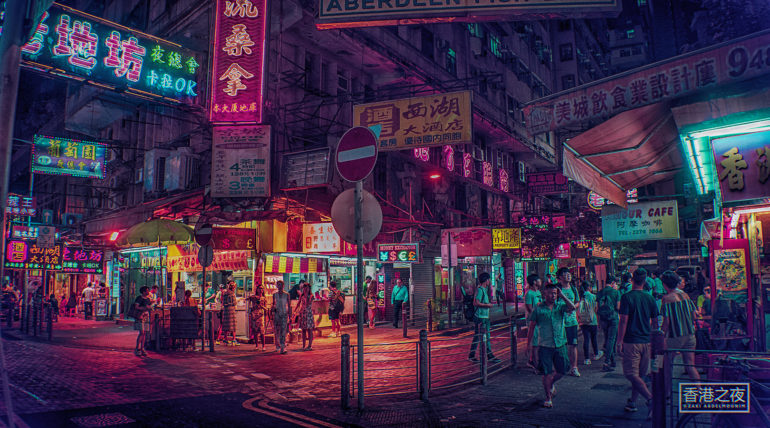
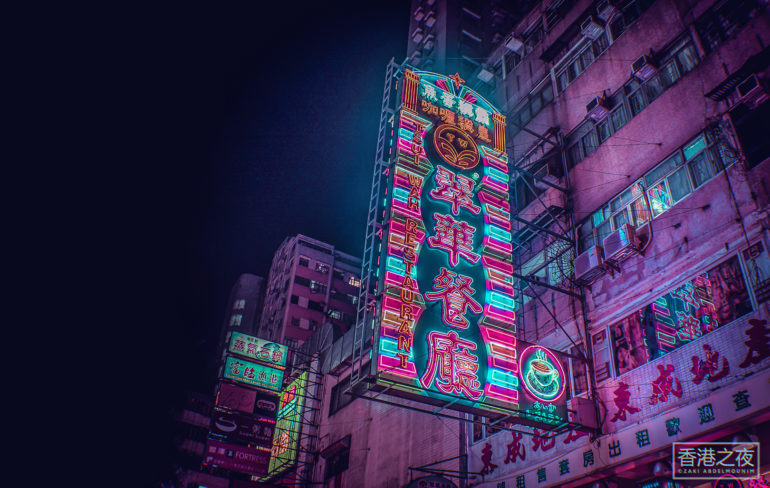
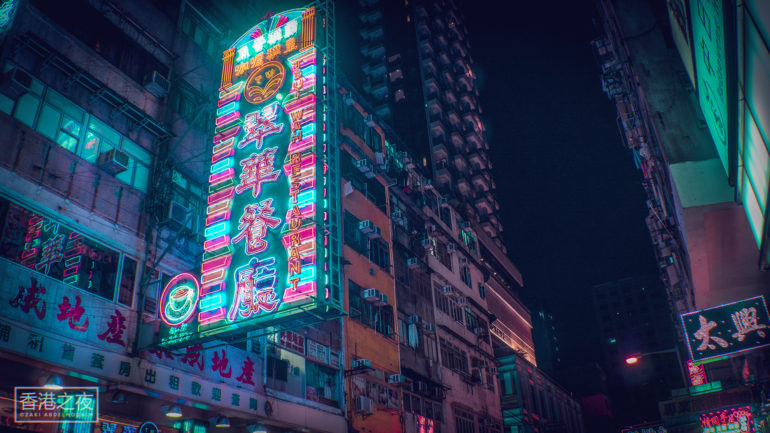
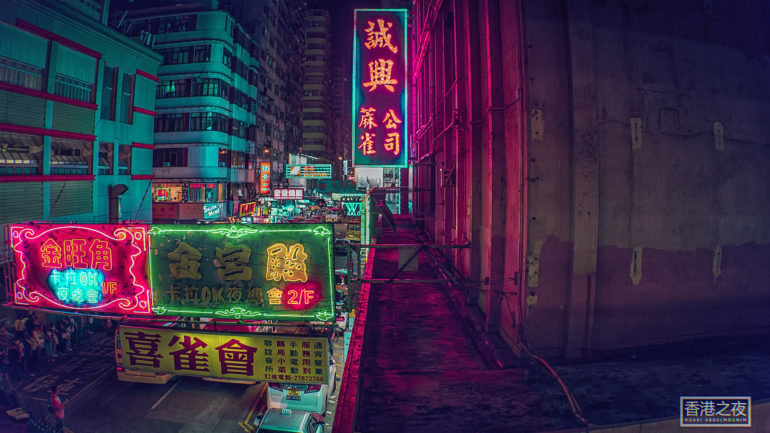
Photographers on Hong Kong’s fading neon glow
To help paint a picture of what the fading neon lights might mean for photographers from now on, I also asked Portela, Roe, and Abdelmounim to share with me their experiences and observations from their past and recent visits to Hong Kong.
Portela, whose first and only time in Hong Kong was in December 2015, was quite impressed and found himself directly connected with the city. “From what I remember, depending on the location you could still see a lot of neons, but I don’t have any references to compare if it was less than before.”
On his visits in January and August this year, Roe likewise noticed that a few iconic signs have been taken down in that small space of time. While he hasn’t noticed a huge impact as a visitor, he’s still concerned about how quickly the city’s neon landscape has been changing.
“Finding out that certain signs that I shot in January are no longer there is quite alarming; it seems the rate at which they are being taken down is rather fast.”
Abdelmounim also observed the change during his most recent visit to the city in March this year. “I did indeed notice how the streets became dimmer and finding shooting spots became a little more difficult.”
All three agreed that while photographers and filmmakers may be lamenting the fading neon cityscape of Hong Kong, most tourists and locals are most likely not particular about it. Portela noted that most tourists roam the city during the day, except for those who enjoy night life.
“Hong Kong won’t lose its glow completely since businesses are resorting to LED signs and huge screens,” Abdelmounim added. “However, it’s losing its most iconic aesthetic that shaped a lot of films like Blade Runner and anime like Ghost in the Shell.”
Imagining a LED-lit Hong Kong
I asked the three photographers to imagine a time when the city’s neon lights have been completely replaced with LED lights. Do they think the streets and cityscapes at night would still be “appealing” to photographers? In what way do they think this will affect photographers’ works, theirs included should they go back and shoot there again?
For Portela, Hong Kong is way more than just neon lights. “So yes, I would go back even if everything becomes LED lights. I would probably find new way to tell the story of that city. The architecture, the people, the streets, even at night they keep representing Hong Kong.”
LED lights are simply not as aesthetic, Roe notes, and many surely agree.
“Neon has a certain warm glow to it, and the way in which they are made is far more artistic and meaningful. The sounds that the signs make as well, all adds up to the amazing atmosphere of the city at night. In fact, that’s what neon signs are to me: art. LED boards are easy to make, and have a harsh light to them. I would still shoot in Hong Kong for certain because the architecture in the city, even at night is truly unique and breathtaking. But it would still be a massive shame to have all the neons replaced by LED lighting.”
“I don’t know about the other photographers, but I would definitely visit Hong Kong again,” Abdelmounim said. “I find a lot of inspiration in Asian cities generally.”



Where to find what’s left of Hong Kong’s neon signs
While writing this feature, I also made a mental note to list down all the places where I can still find Hong Kong’s remaining neon signs. It’s interesting to find that while the big signs dotting the streets are steadily being taken down, neon signs have also started to grace the interiors of pubs and restaurants. I hope you find these links useful, especially if catching what’s left of the neon treasures is also your goal for the coming months.
Hong Kong’s best spots for neon signs (TimeOut)
The Hong Kong Neon Heritage (Facebook Page)
NeonSigns.HK (Map)
Images by Xavier Portela, Steve Roe, and Zaki Abdelmounim were used with permission.


